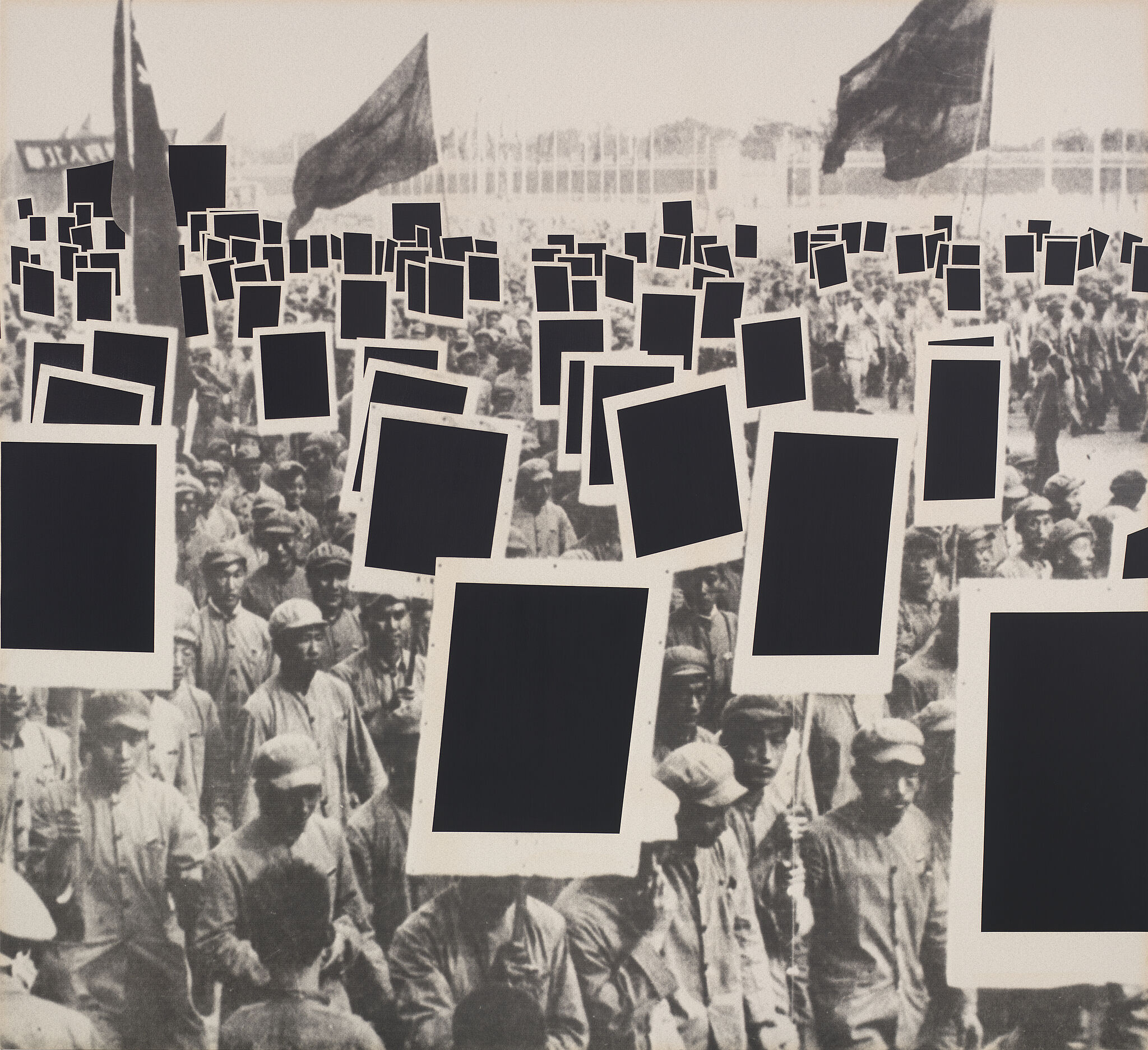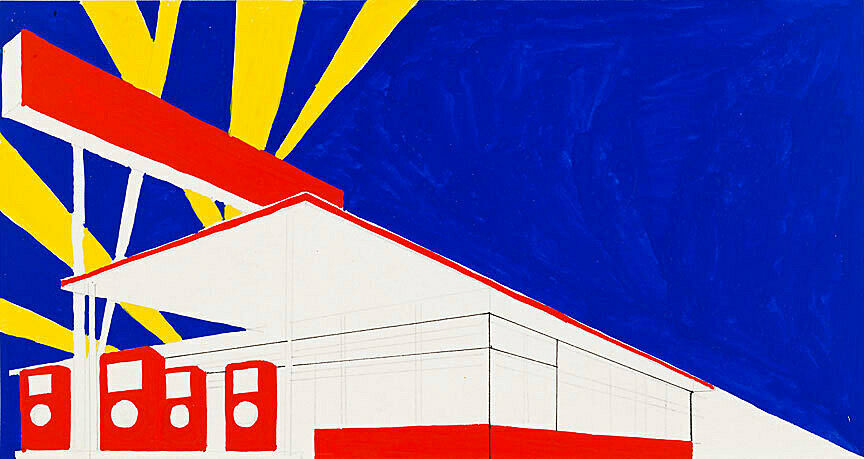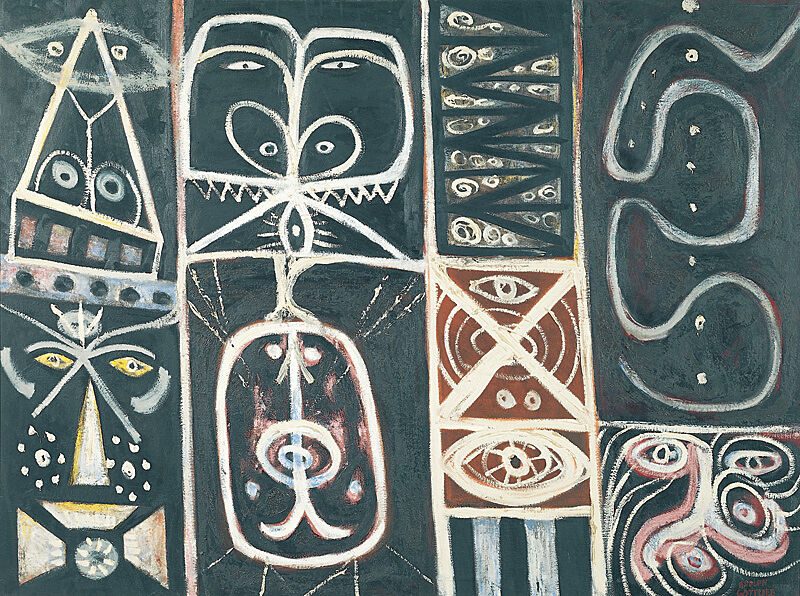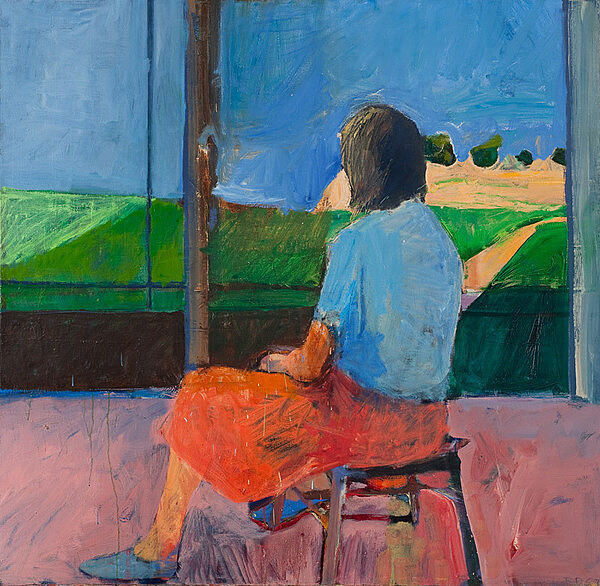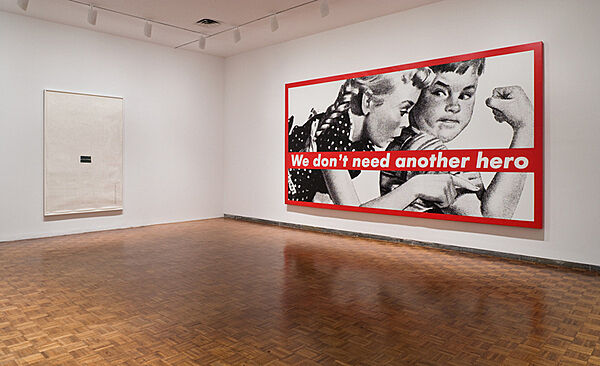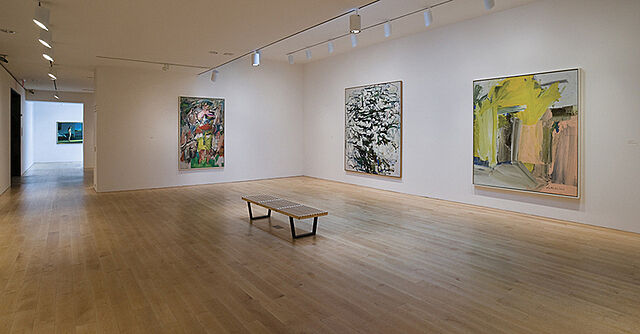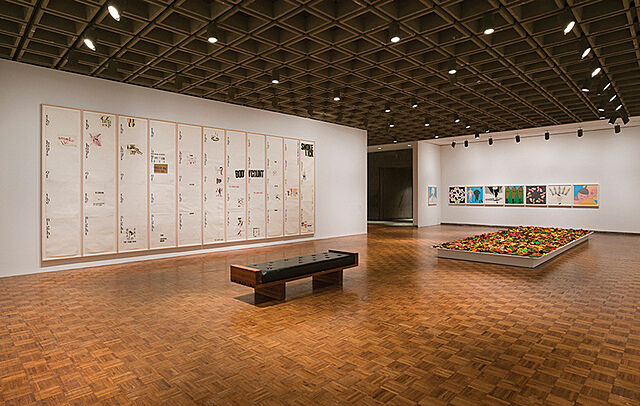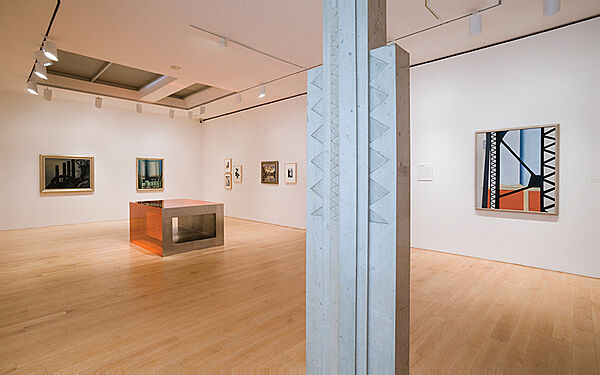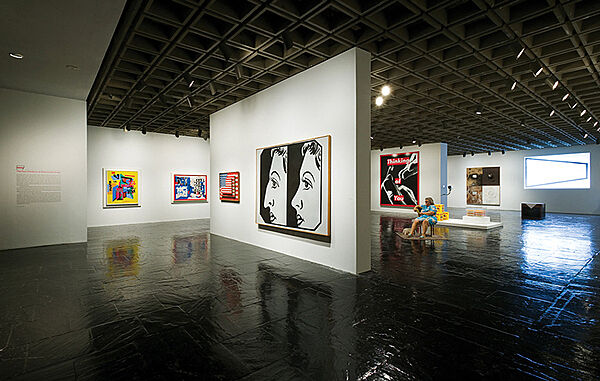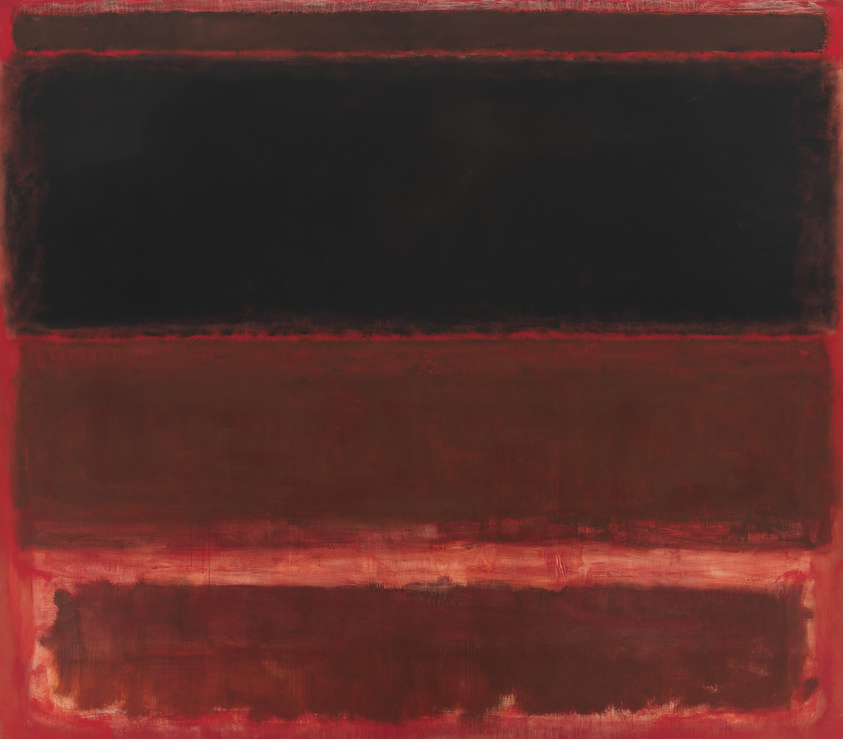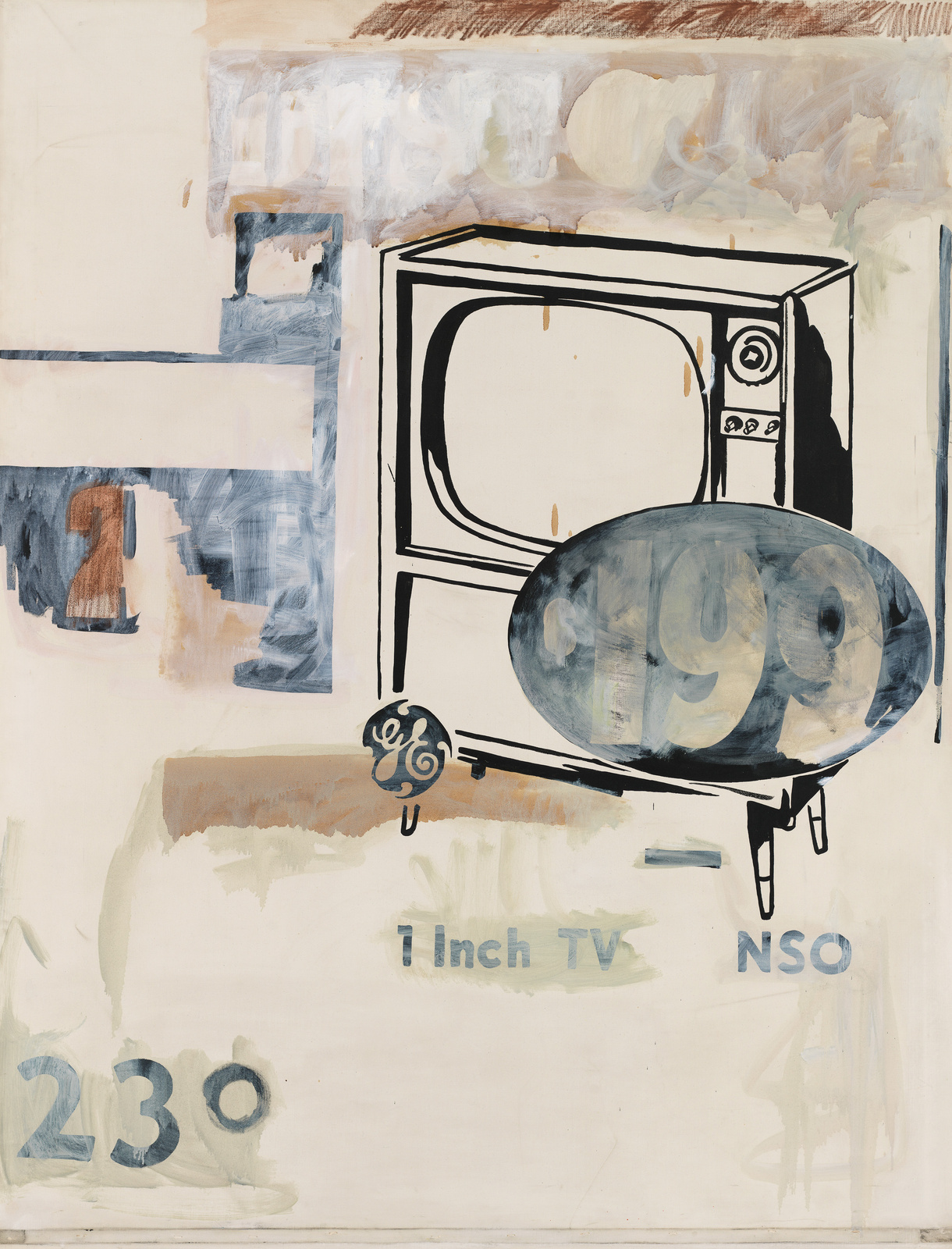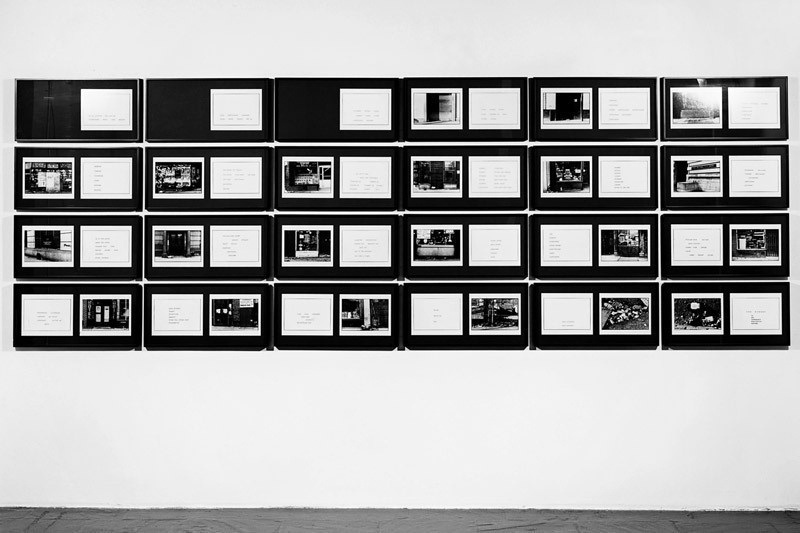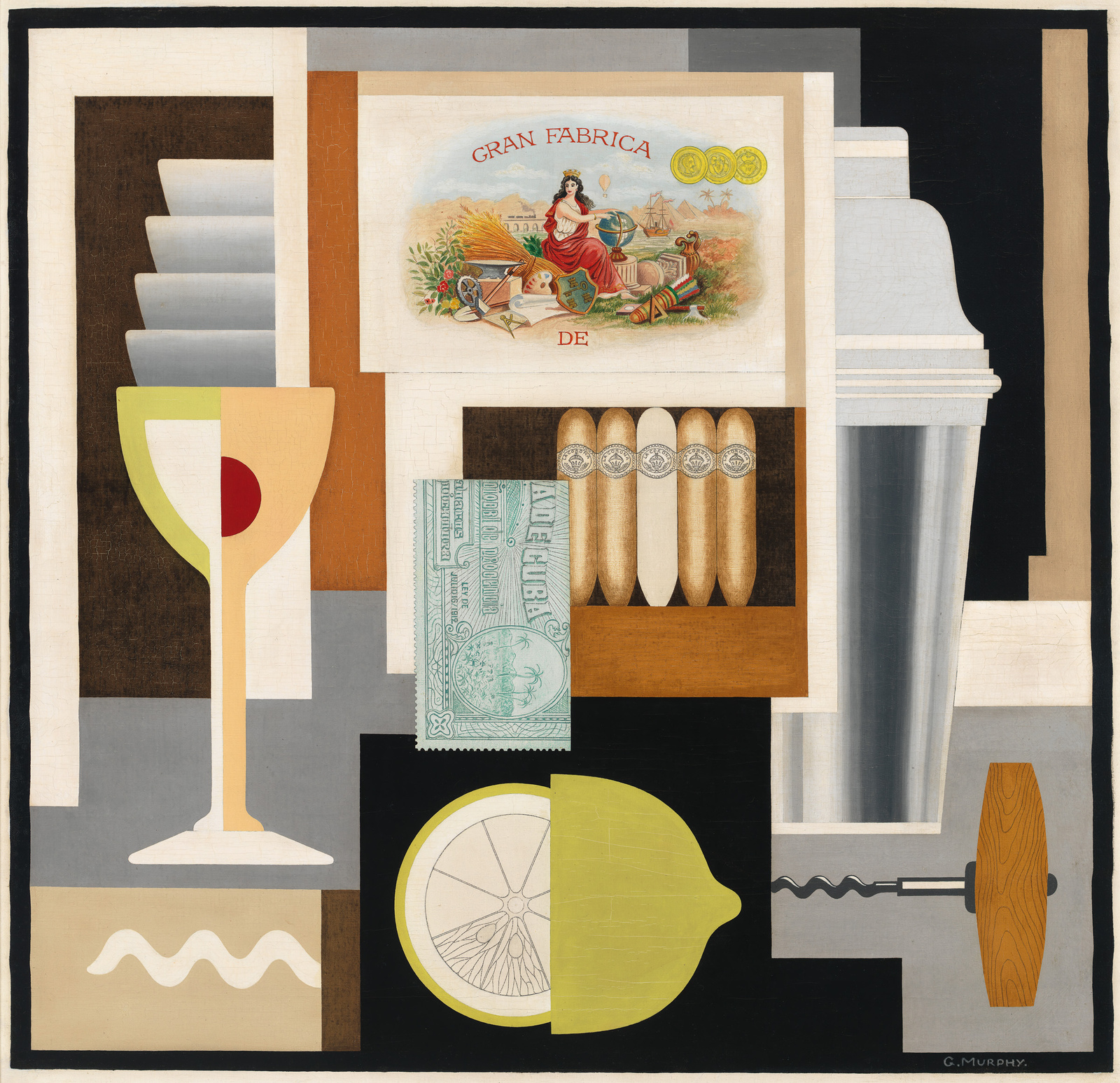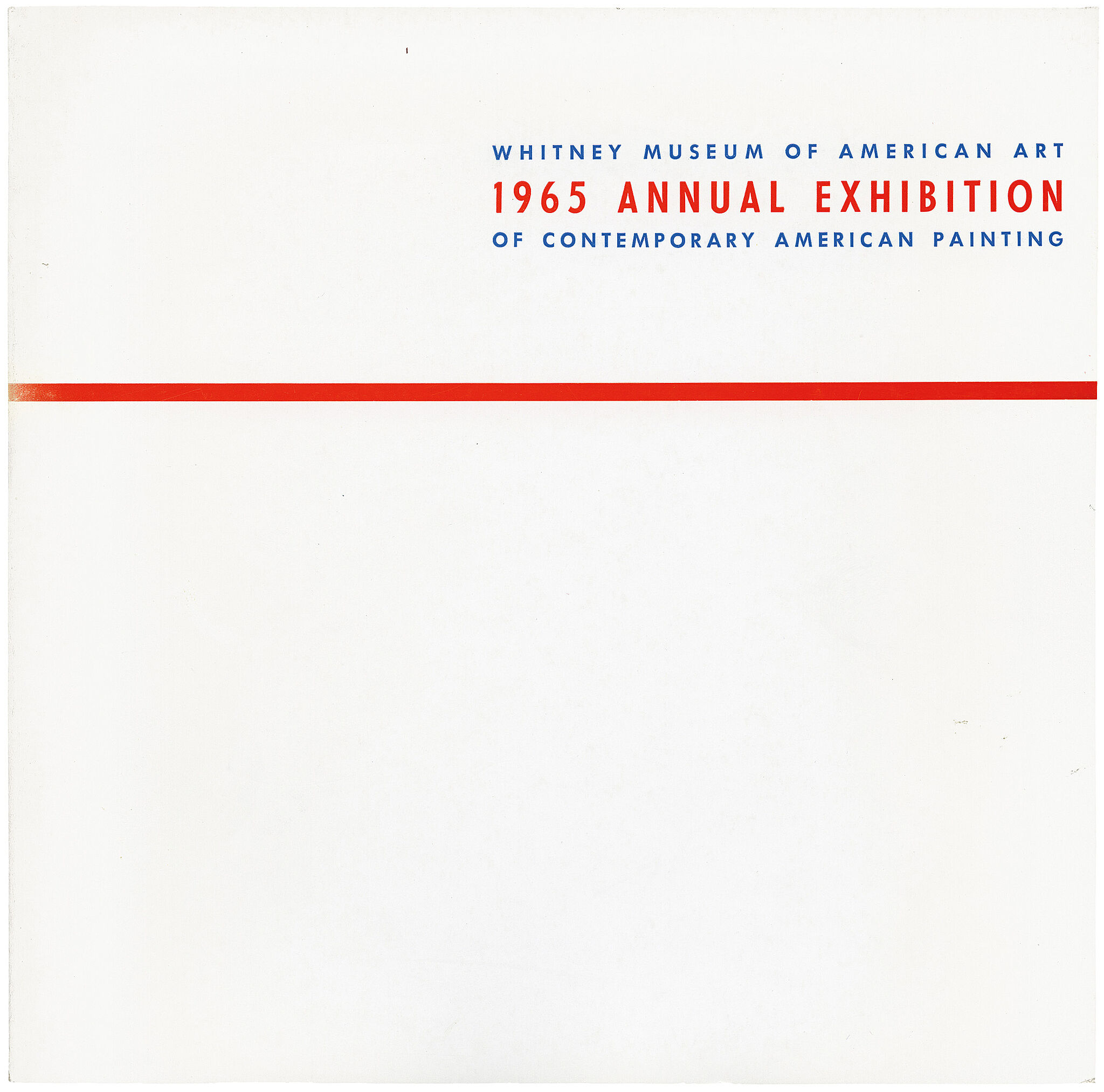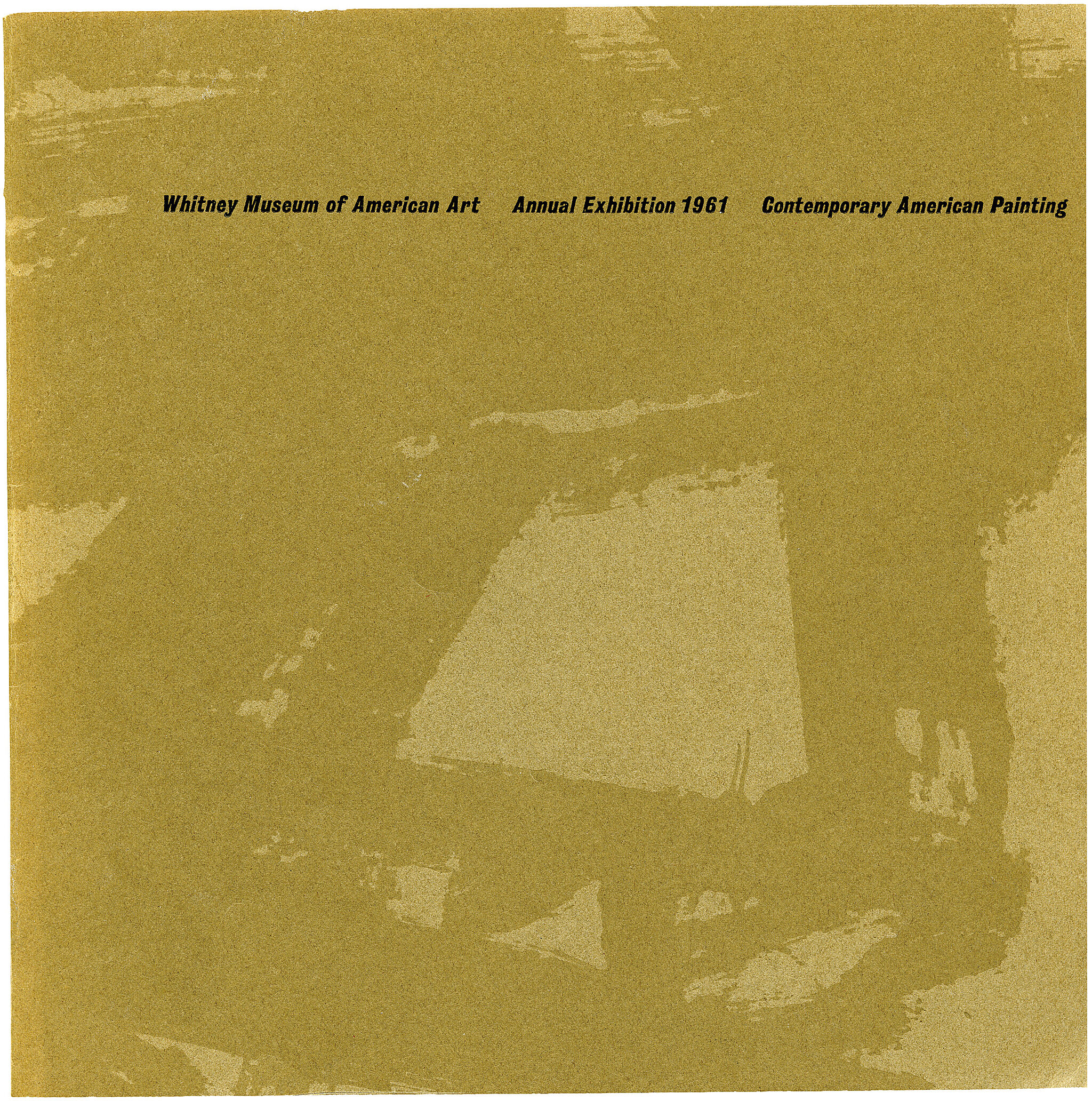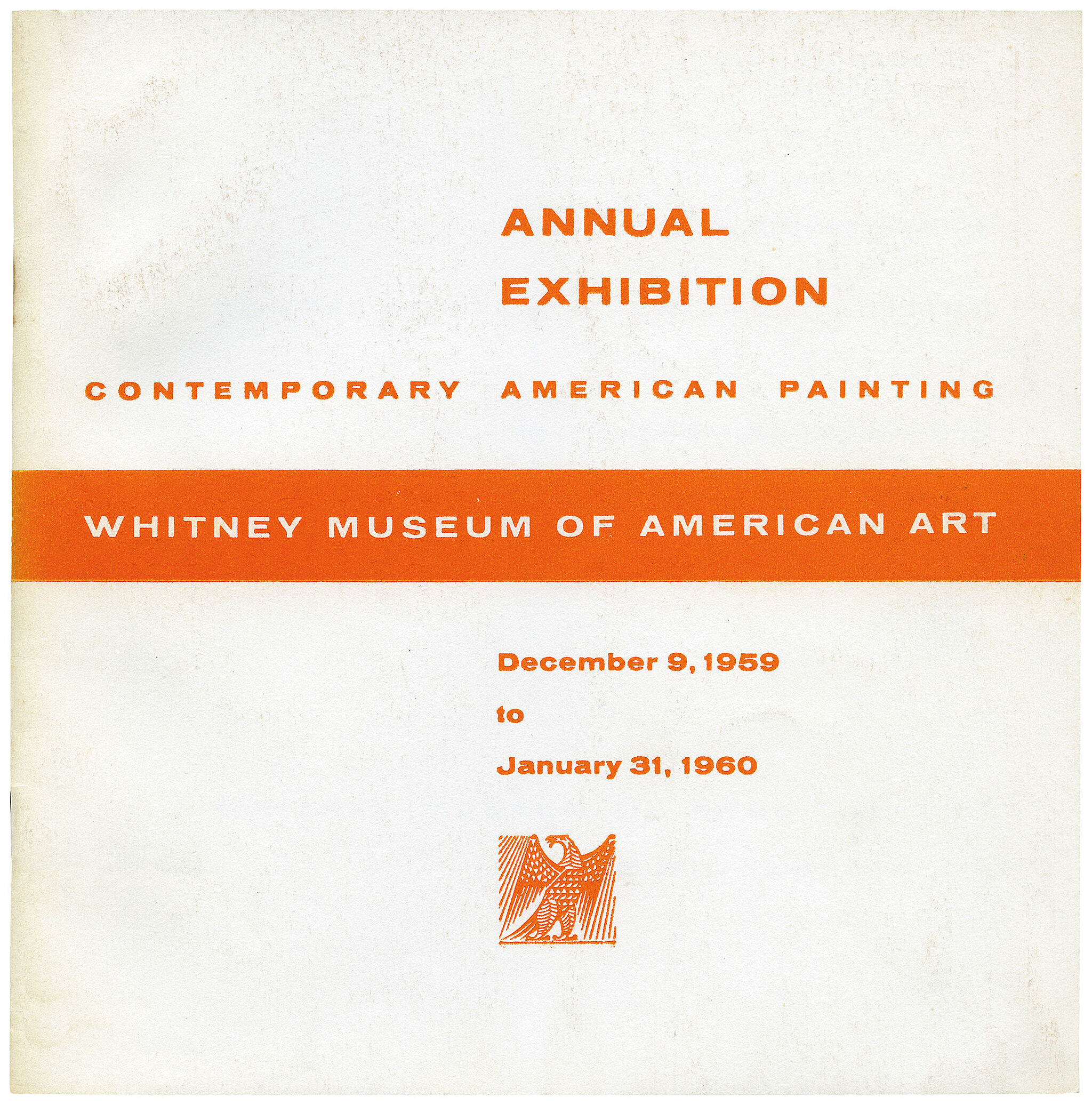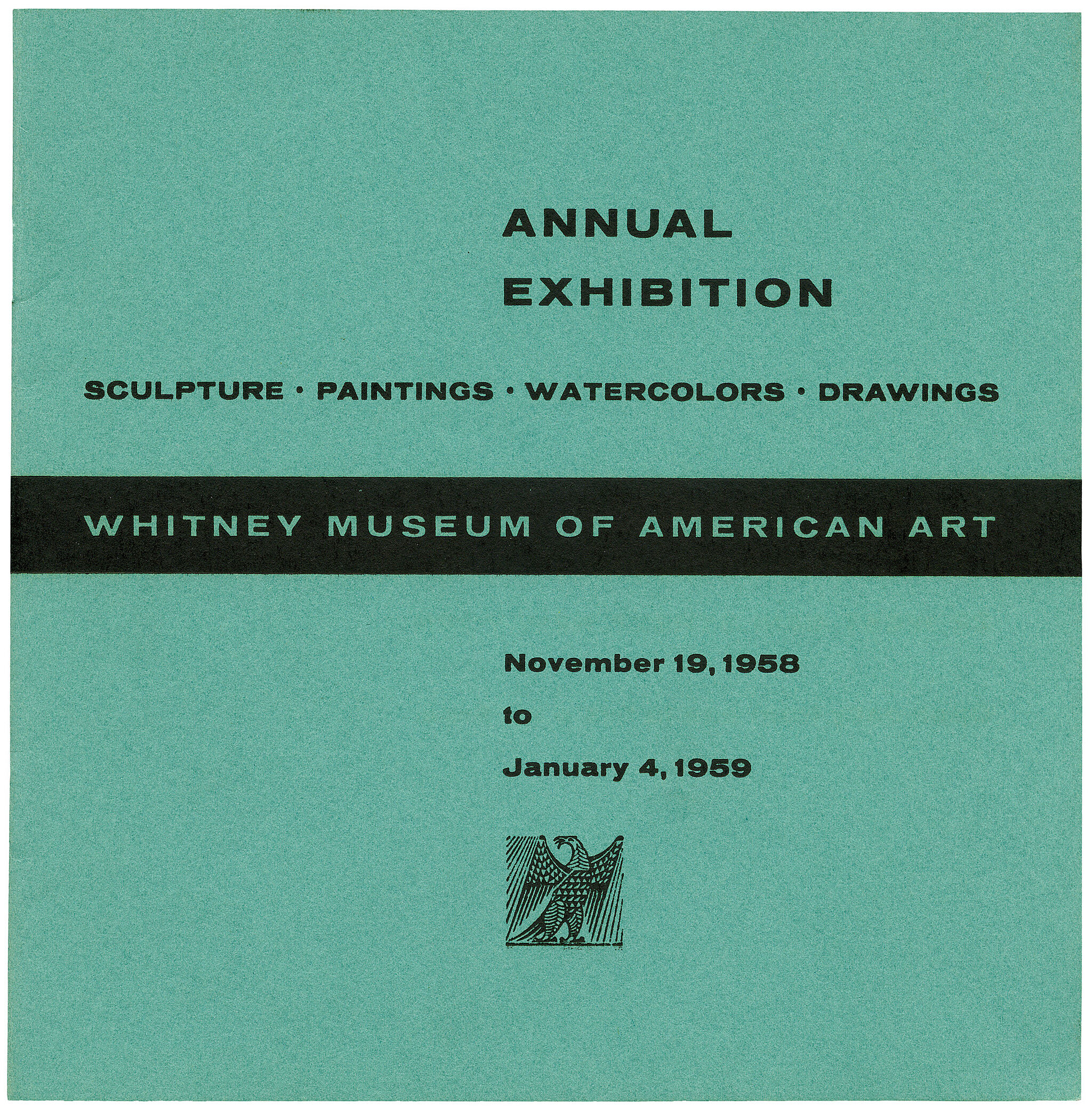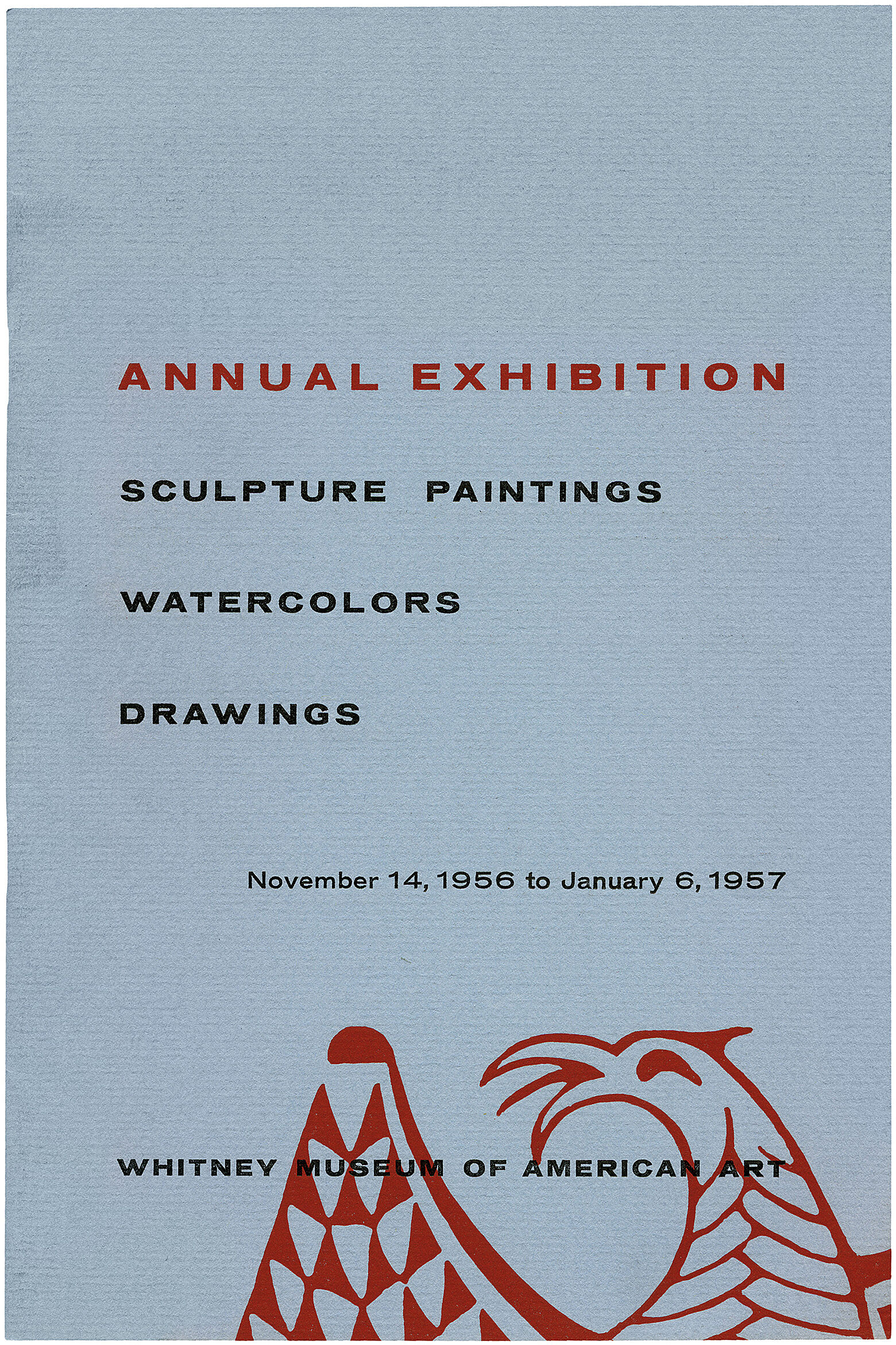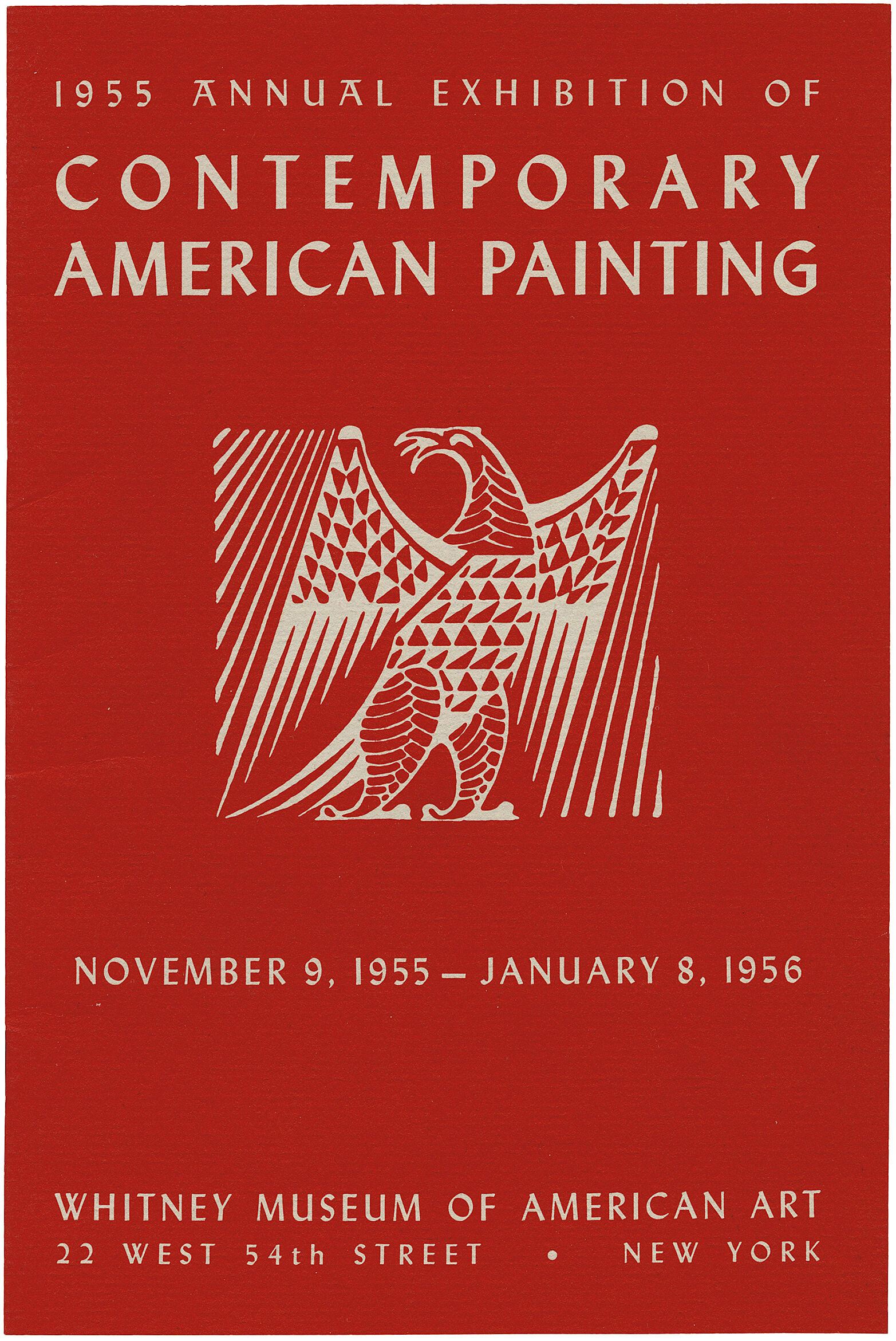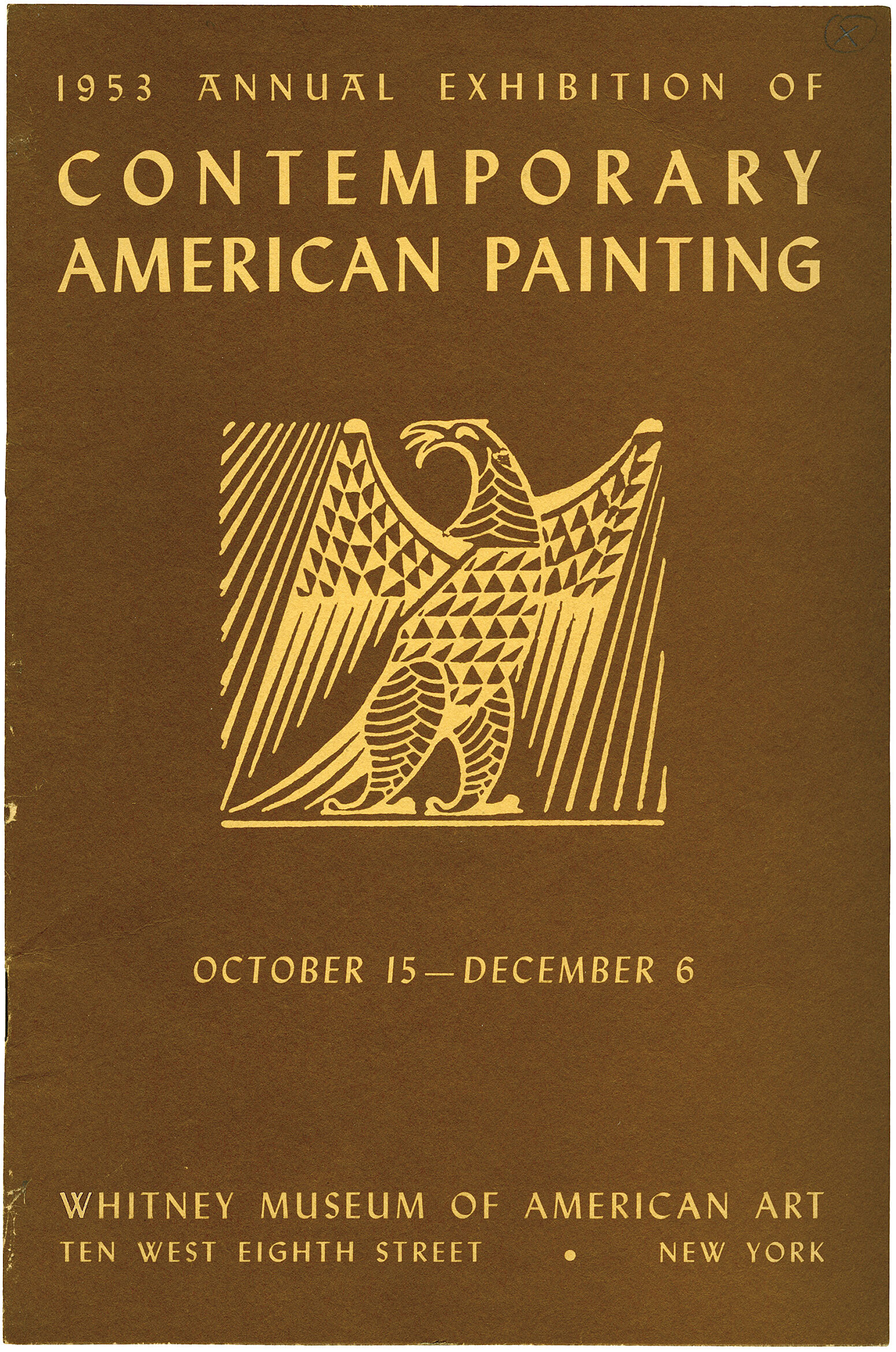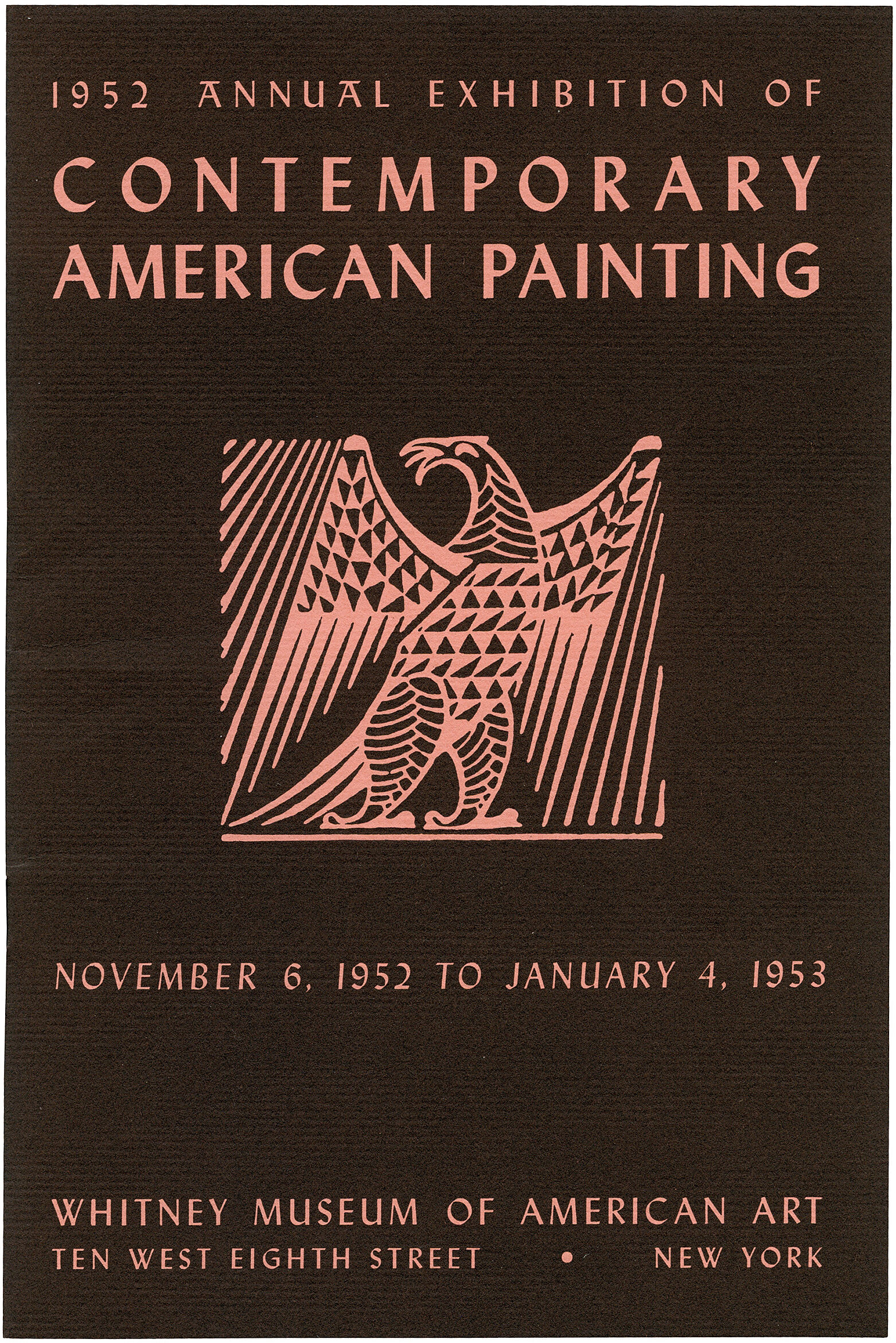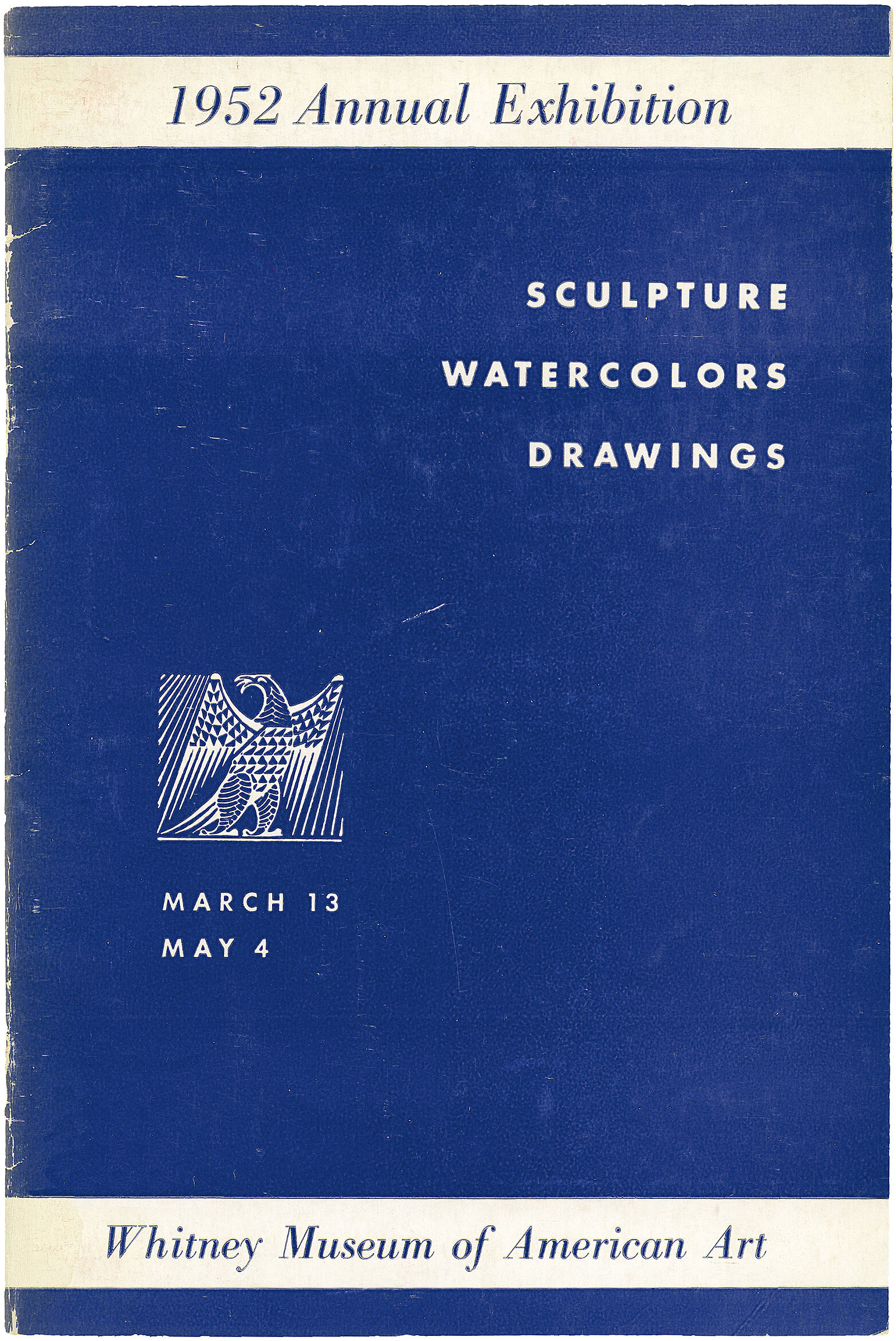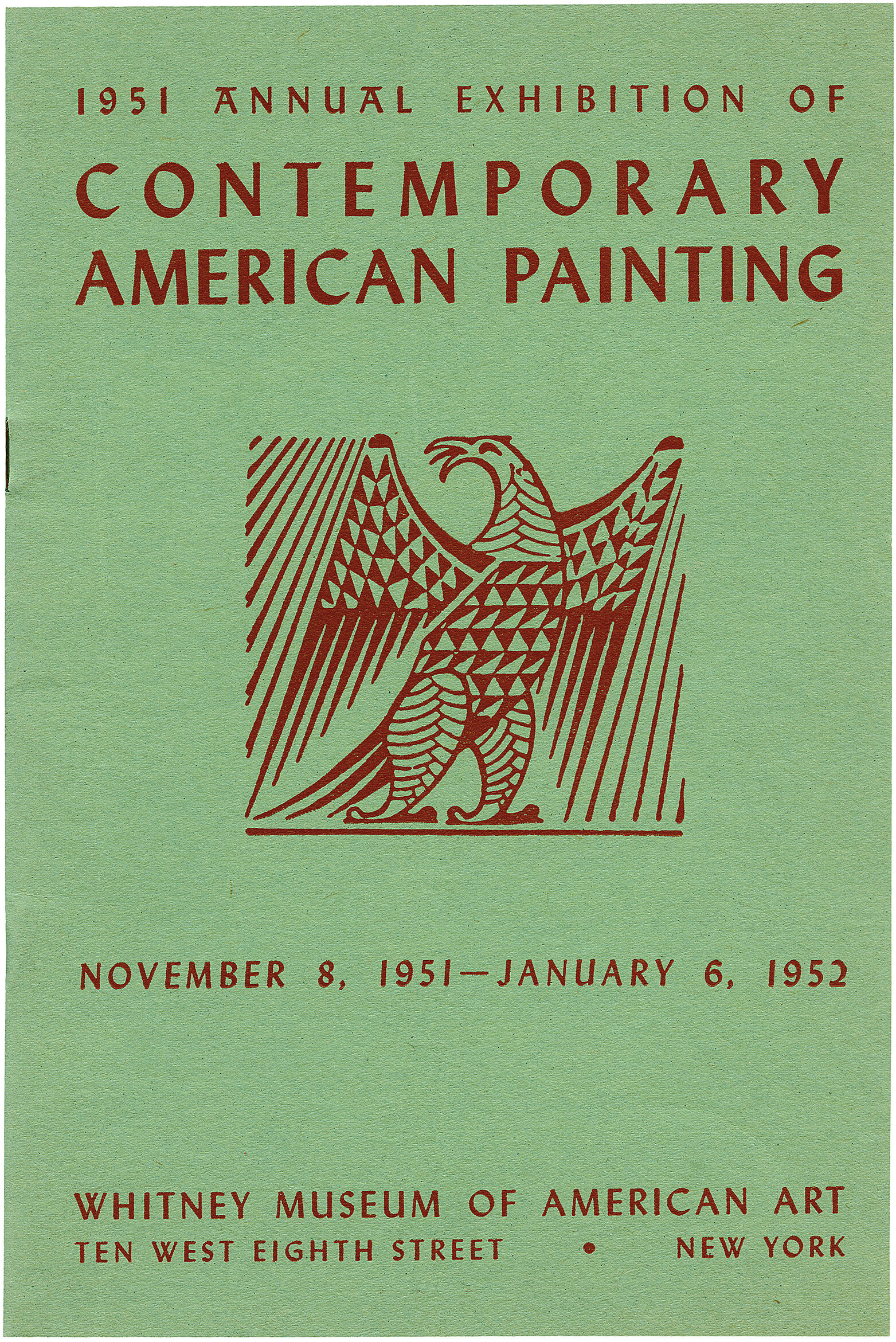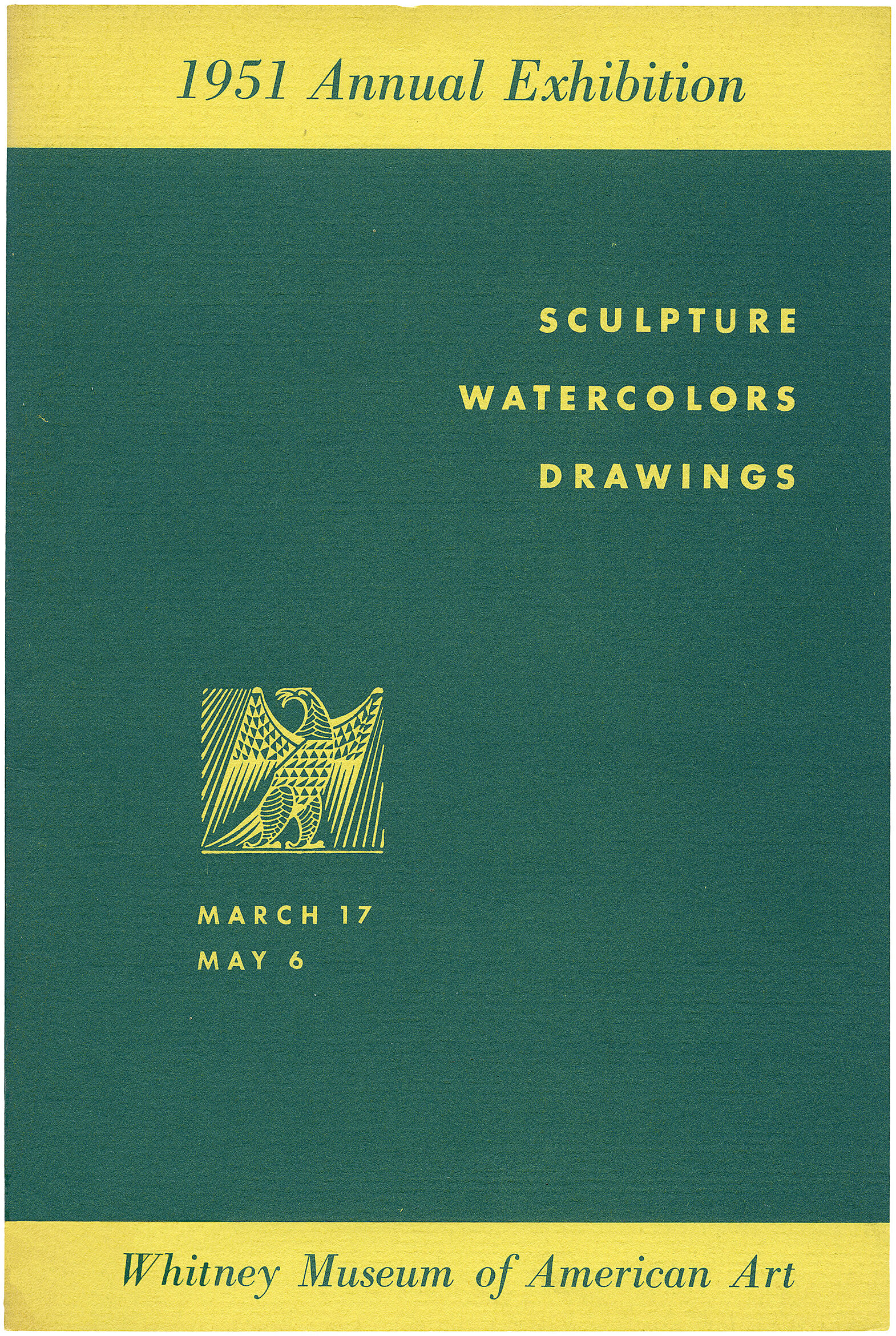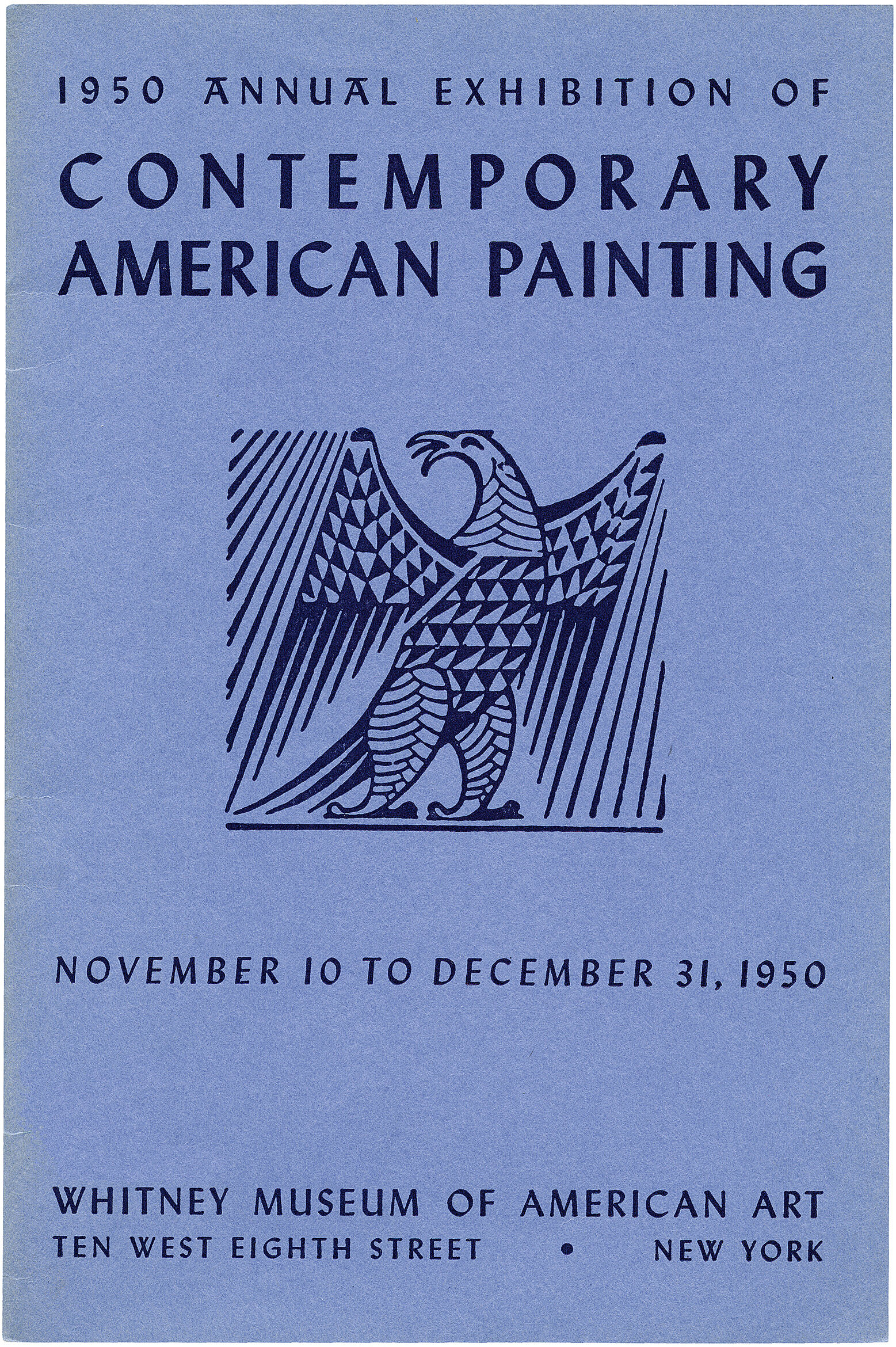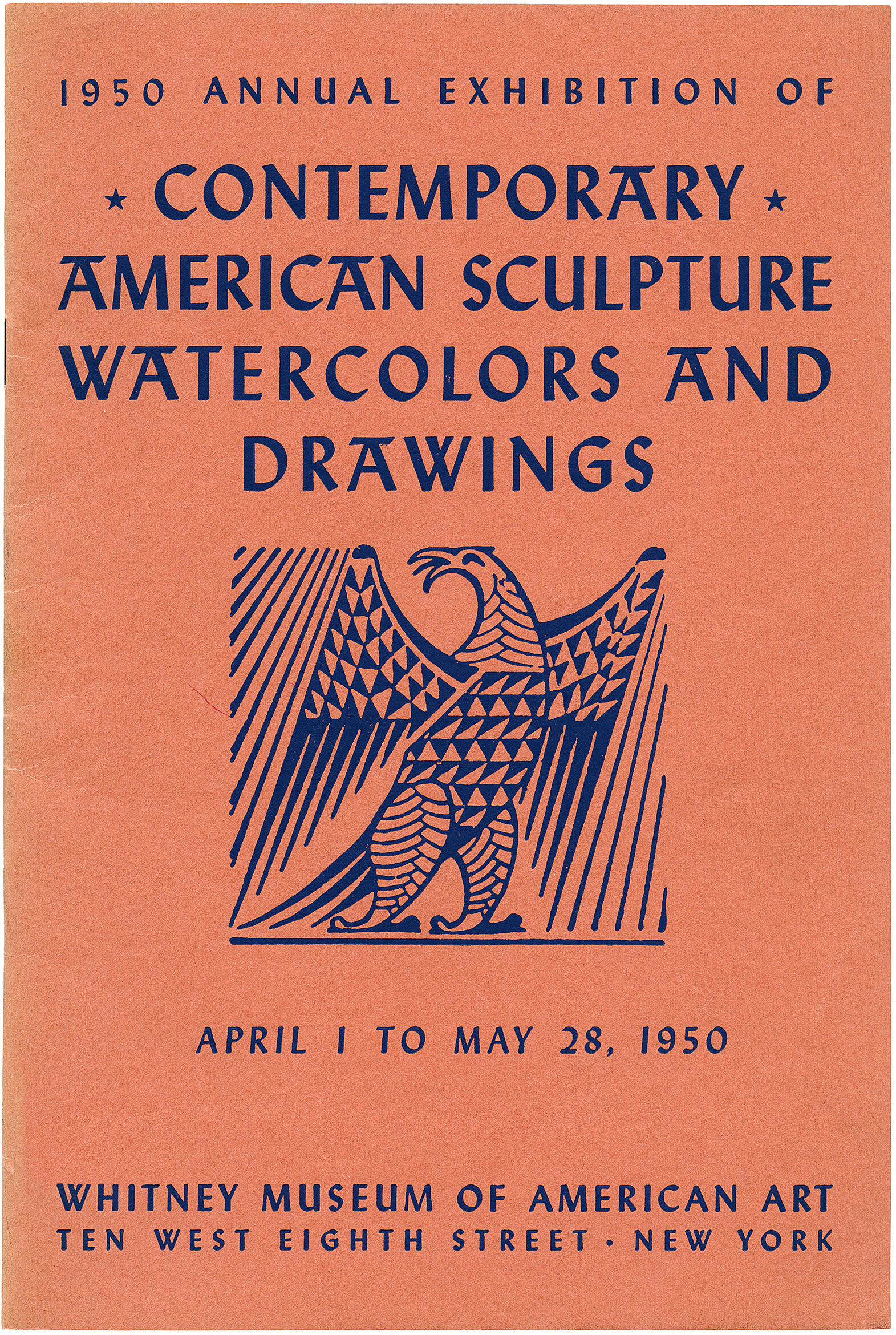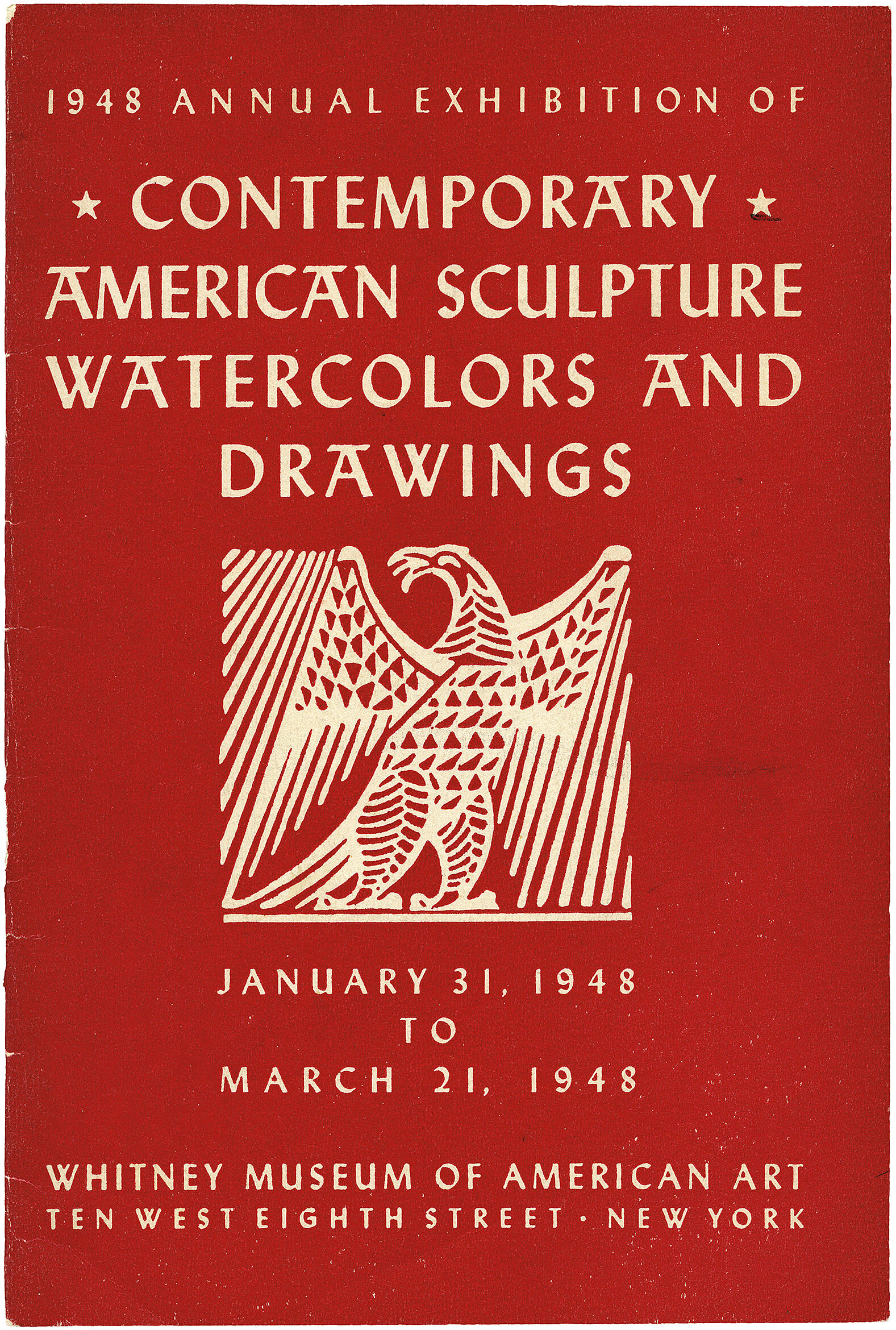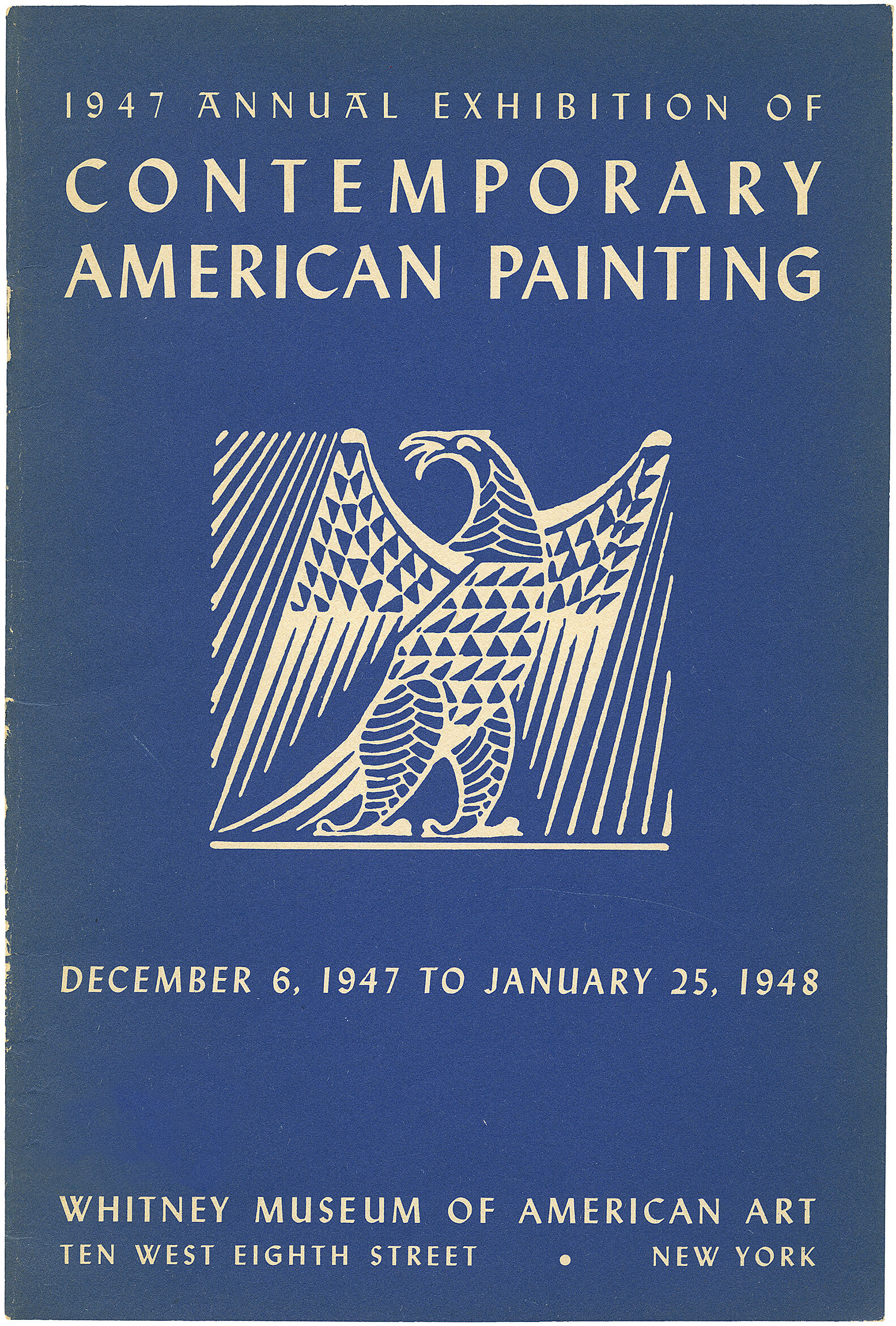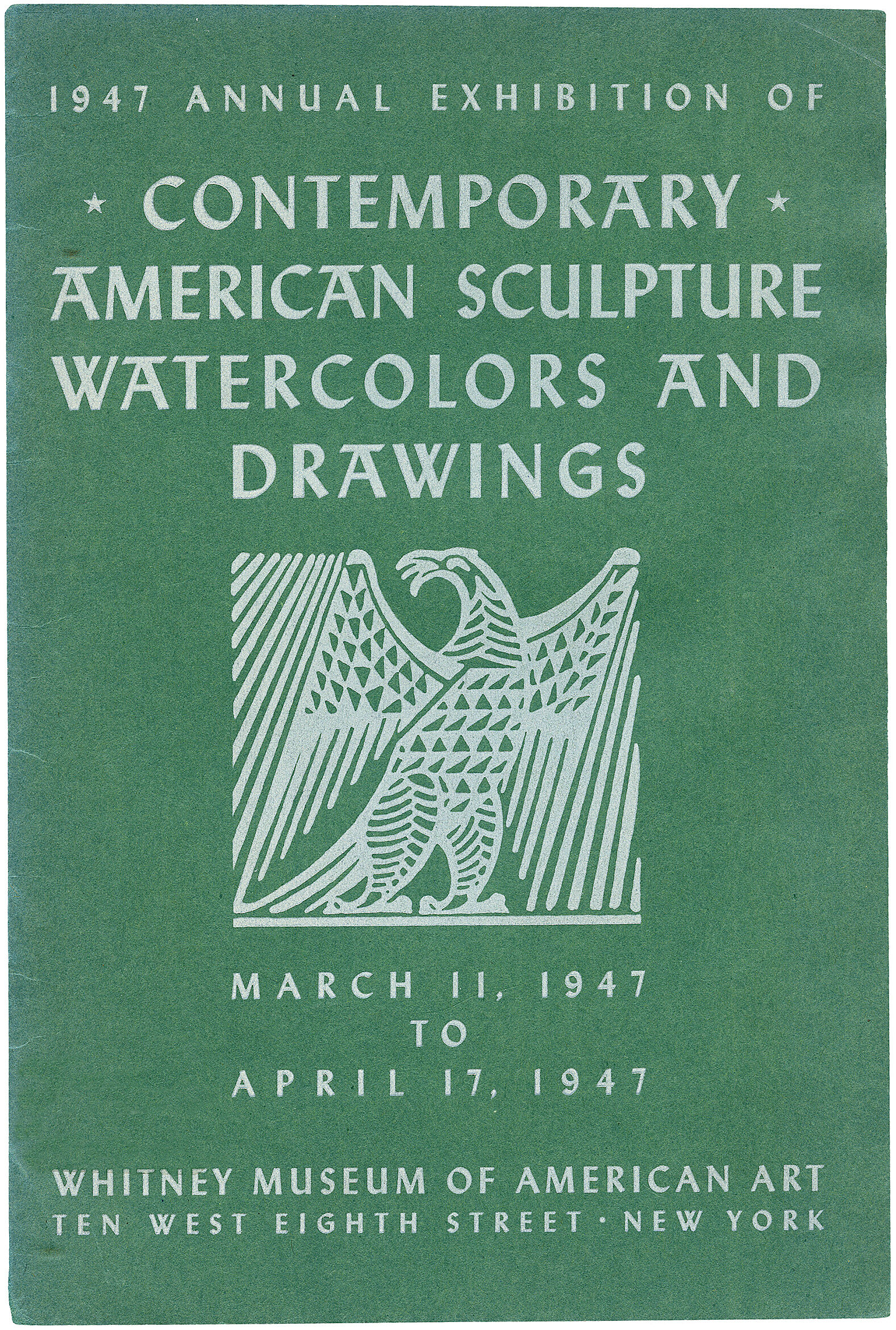Ad Reinhardt
1913–1967
A prominent member of the mid-twentieth-century New York avant-garde, Ad Reinhardt distanced himself from his Abstract Expressionist contemporaries by focusing on the formal relationships within a work rather than compositions that emphasize self-expression. His writings, lectures, and artistic output are distinguished by a philosophical meditation on the meaning of abstraction and the virtues of art-for-art’s- sake, or, as he termed it, “art-as-art.”
Reinhardt often expressed his views in the form of cartoon collages he published in select newspapers and journals. Museum Landscape satirizes the art world’s liberal use of the term abstraction by taking aim at the Whitney Museum’s 1950 Annual. Featuring collage elements from a review that declared, “Abstraction Crowned at Whitney Annual,” the work depicts, among other elements, finger paints as the medium of Jackson Pollock and Willem de Kooning.
Reinhardt’s search for a “pure” abstract art culminated with his “black” paintings. Beginning in 1956 he worked exclusively with five-by-five-foot square canvases featuring dark, matte, hand- painted surfaces. The somber variations of Abstract Painting’s nine extraordinarily subtle black-on-black squares are perceptible only through sustained viewing and are lost in reproduction. The only viable experience, Reinhardt felt, was in contemplating the actual painting. In their elimination of subject matter and personal expression, these works not only represented a distilled vision of art but also prefigured the concerns of Minimalists whose work would gain traction in the 1960s and 1970s.
Introduction
Adolph Friedrich Reinhardt (December 24, 1913 – August 30, 1967) was an American abstract painter and art theorist active in New York City for more than three decades. As a theorist he wrote and lectured extensively on art and was a major influence on conceptual art, minimal art, and monochrome painting.
Most famous for his "black" or "ultimate" paintings, he claimed to be painting the "last paintings" that anyone can paint. He believed in a philosophy of art he called Art-as-Art and used his writing and satirical cartoons to advocate for abstract art and against what he described as "the disreputable practices of artists-as-artists".
He was a member of the American Abstract Artists (AAA) and part of the movement centered on the Betty Parsons Gallery that became known as Abstract Expressionism. He was also a member of The Club, the meeting place for the New York School abstract expressionist artists during the 1940s and 1950s.
Wikidata identifier
Q345569
Information from Wikipedia, made available under the Creative Commons Attribution-ShareAlike License . Accessed November 8, 2025.
Introduction
An abstract painter considered influential in the development of Minimalism. Though a contemporary of the Abstract Expressionists, he rejected biomorphism and developed paintings based on geometry, specifically grids, often using a single color in gradations. His last works were a series of all-black canvases.
Country of birth
United States
Roles
Artist, abstract artist, collagist, painter, writer
ULAN identifier
500013982
Names
Ad Reinhardt, Adolph Frederick Reinhardt, Adolph Dietmar Friedrich Reinhardt, Adolph Dietrich Friedrich Reinhardt, Adolph F. Reinhardt, Adolph Frederick. Reinhardt
Information from the Getty Research Institute's Union List of Artist Names ® (ULAN), made available under the ODC Attribution License. Accessed November 8, 2025.

